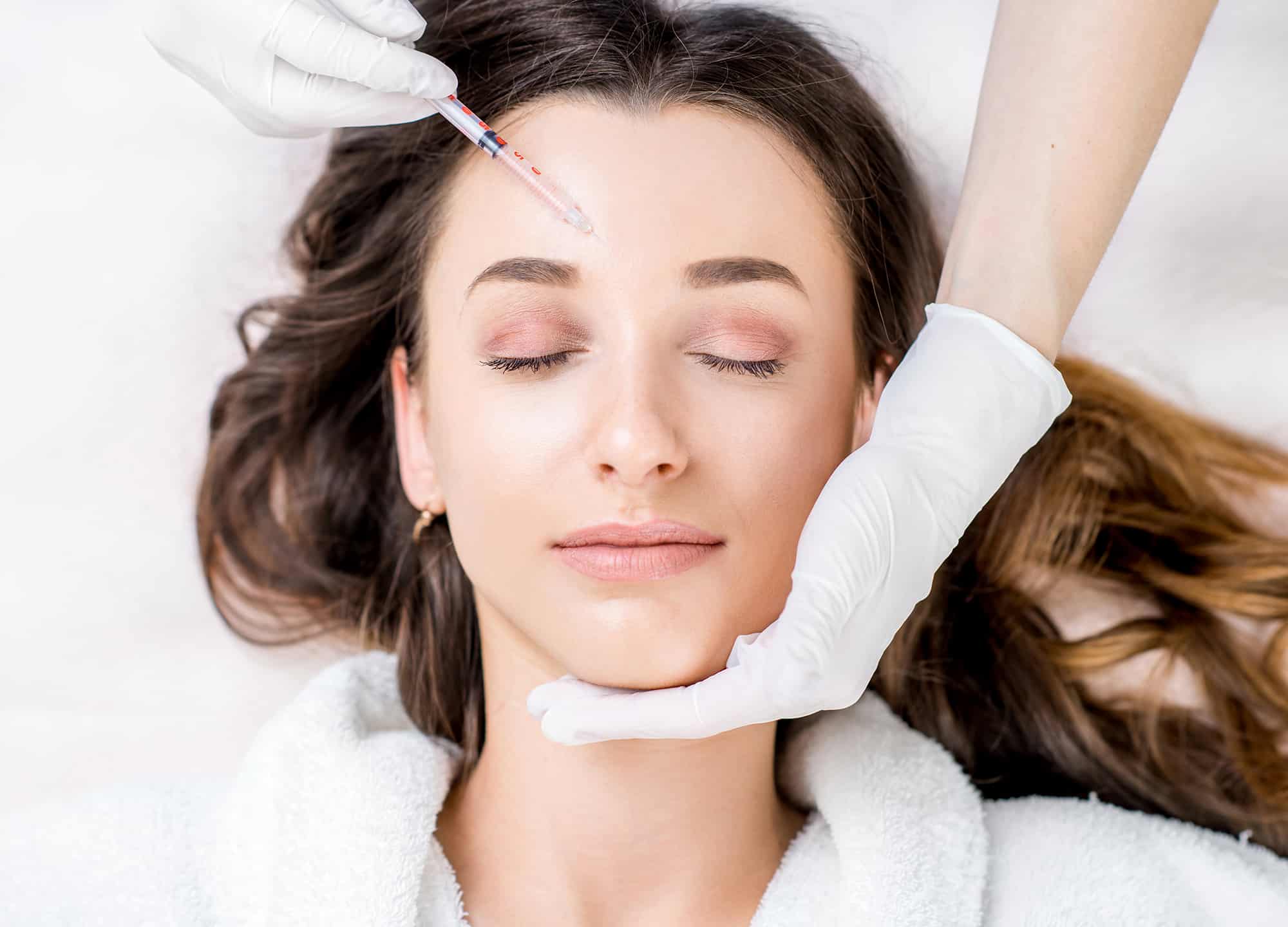When it comes to running errands, everyone loves to save time and trips by completing two tasks at the same place on the same day. It’s why Target is so popular—you need almond milk and a 10-speed bike? Get them both within mere minutes and feet of each other! The same drive for convenience is true of many of us who seek out aesthetic treatments. Take one of my recent trips to the dermatologist: in addition to cheek injections with Juvéderm Voluma XC, I received Botox injections in my forehead, tackling two different cosmetic concerns at the same time.
However, while simultaneous administrations of facial filler and neuromodulators are typically safe when done by a qualified injector, that’s not true of all in-office aesthetic treatments—no matter how skilled the doctor is. In fact, it’s the most reputable doctors who will be the first to tell you not to combine certain treatments—even some that aren’t obviously incompatible—in a single appointment because your provider prioritizes your safety and results over expediency.
We spoke to two of those vigilant doctors—board-certified dermatologists Dr. Michele Green, of New York City, and Dr. Deanne Mraz Robinson, of Westport, Connecticut—to find out which treatments they would never agree to perform on a patient on the same day.
Chemical peel + fractional laser
Both chemical peels and fractional laser treatments, like Fraxel, rejuvenate the skin, causing peeling of the outer layers, Dr. Green says. “Therefore, combining both treatments on the same day would be too much for the skin.” Both are considered skin-resurfacing treatments that remove dead skin cells to facilitate the growth of new skin cells, and they are simply too strong to combine.
“While both treatments are excellent for skin rejuvenation, there is the possibility of hyperpigmentation if both are done at the same time,” Dr. Green adds. “Combining both treatments would increase the risk of a burn and subsequent hyperpigmentation, since you are removing the top layer of skin.” And that’s ironic, considering hyperpigmentation and discoloration are among the main reasons people seek out these treatments in the first place.
Related: 4 Things That Should Happen During Your Facial—and 4 That Shouldn’t
Laser resurfacing + filler
Peels aren’t the only treatment you’ll want to avoid on the same day as a laser resurfacing procedure. You may want to hold off on injectable fillers too, depending on the kind.
“A combination of laser resurfacing and filler can be OK, but the order and depth matter,” Dr. Mraz Robinson explains. She’s comfortable with performing deep, supraperiosteal filler (like cheek injections) first, followed by non-ablative laser resurfacing—but not the other way around: not with ablative lasers and never with a more shallow administration of filler. “If more superficial filler is being performed, followed by ablative resurfacing, it is best to do [them] on separate days. Ablative lasers make holes in the skin [that] can be tuned to different depths. If superficial filler is placed and an ablative laser is performed directly over top, this can potentially alter the filler,” she explains.
CoolSculpting + Thermage
It’s not just facial treatments that need to timed wisely. Certain body-shaping procedures shouldn’t cross paths on the same day either.
Thermage uses heat to promote immediate and progressive collagen remodeling in order to produce tighter skin; CoolSculpting, on the other hand, uses cryolipolysis—literally, fat freezing—to kill unwanted fat cells. And while they’re noninvasive and serve different purposes, the drastic temperature differences can mean compromised results.
“I would not recommend treating the same area on the same day,” Dr. Green says, noting that while there isn’t an increased risk of injury, it’s not ideal to combine the two at the same appointment because it can affect treatment results. But that doesn’t mean doing both is completely out of the question—just choose the order and space them out appropriately. “I recommend doing Thermage before CoolSculpting. However, you should wait at least two weeks between treatments.”
Injectables + spa facial
When we say certain aesthetic treatments shouldn’t be performed on the same day, that also applies to the treatments you might do after you leave the doctor’s office. For example, if you get injections of a neuromodulator, like Botox or Dysport, or injectable filler, like Juvéderm, you should refrain from taking a trip to the spa for a relaxing facial.
“You don’t want to displace the product with the facial massage,” Dr. Mraz Robinson says. “Additionally, this could exacerbate bruising.”
You may want to avoid a traditional massage as well, since resting your face in a massage table’s face cradle can have a similarly negative effect in the hours following facial injections.
Related: 6 Changes That Happen to Your Skin During Menopause—and How to Adjust Your Skin-Care Routine
Fractional laser or microneedling + application of nonmedical-grade topicals
Immediately after your doctor performs a fractional laser or microneedling treatment on you, they’ll apply only meticulously formulated topical skin-care products to your face. There’s a good reason for that.
“A fractional ablative laser works by creating columns of thermal injury in the skin, extending from the upper level [epidermis] to the living layer [dermis],” Dr. Mraz Robinzon says, explaining that microneedling produces a similar controlled injury, without the heat. “Application of topicals that are not pure or containing chemicals such as silicone can produce extreme reactions, [like] granulomas or severe infections.” These granulomatous tissue masses can be caused if materials and chemicals in certain topicals are forced into the dermis at the time of treatment, triggering the body to try to fight off the foreign ingredients and causing an inflammatory response.
Yet another reason to save the spa facial for another day—not to mention excellent motivation for following your doctor’s aftercare instructions when you get home.











